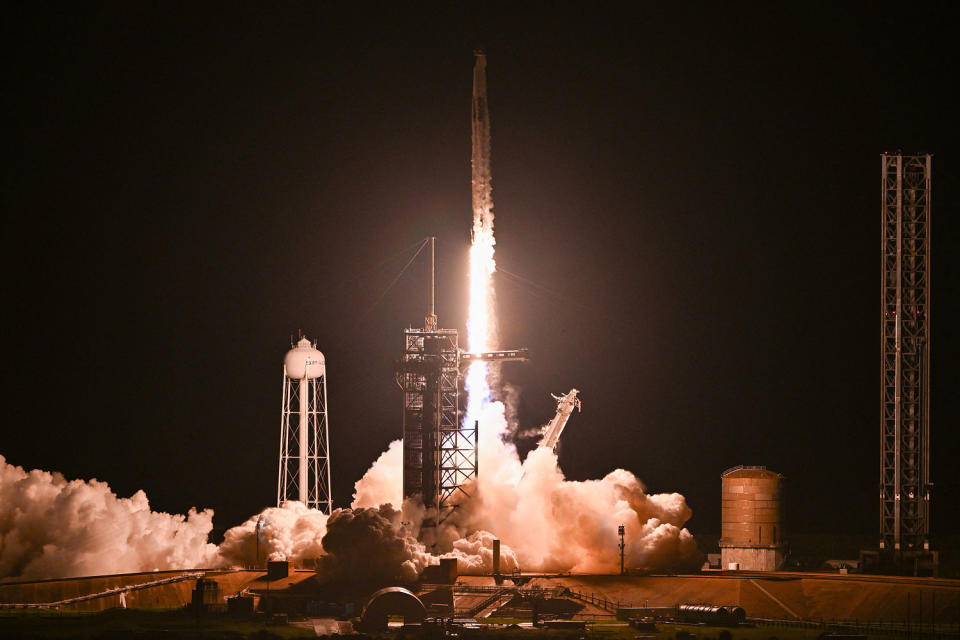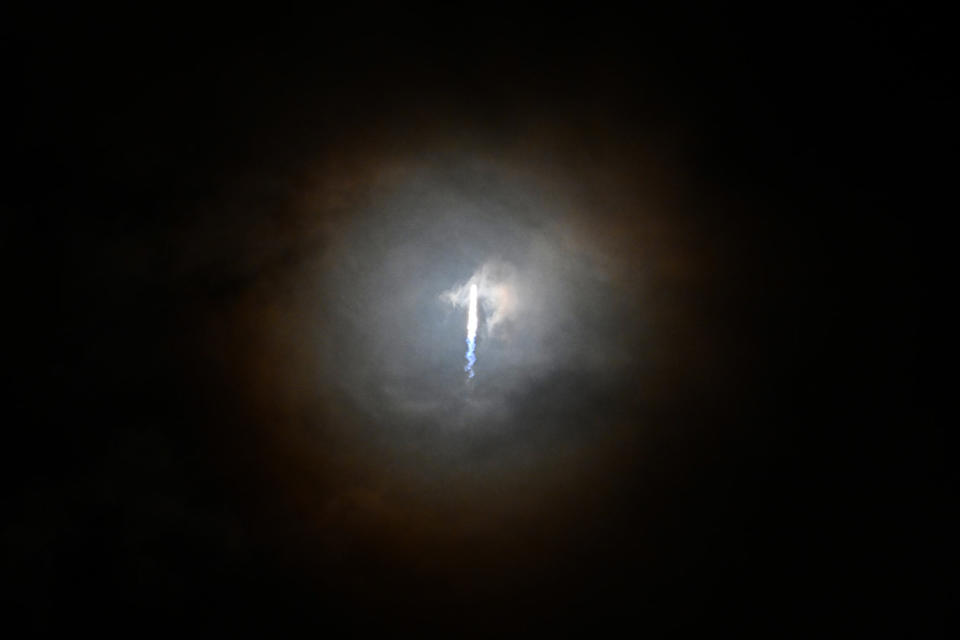SpaceX launches private mission expected to feature the first all-civilian spacewalk
A SpaceX capsule carrying four private citizens blasted off early Tuesday on a five-day mission that is set to include the first spacewalk carried out by an all-civilian crew.
The mission, known as Polaris Dawn, lifted off at 5:24 a.m. ET from Launch Complex 39A at NASA’s Kennedy Space Center in Florida.
The journey is designed to carry the four crew members to the highest orbital altitude that humans have reached since the final Apollo moon mission in 1972: 870 miles above Earth’s surface. That’s more than three times higher than the International Space Station.
While in space, the group will test new spacesuits and technologies that could pave the way for future long-duration missions to the moon and eventually Mars.

The four-person crew is made up of billionaire entrepreneur Jared Isaacman, founder and CEO of the payment processing company Shift4; retired Air Force Lt. Col. Scott “Kidd” Poteet; and SpaceX engineers Sarah Gillis and Anna Menon. Isaacman, who funded and took part in the first all-civilian SpaceX mission to orbit in 2021, is bankrolling the Polaris Dawn mission in partnership with SpaceX.
The crew members rode to orbit in a Crew Dragon capsule atop a Falcon 9 rocket.
Shortly after the capsule reached orbit, Isaacman thanked everyone who had supported the mission and went out to watch the liftoff.
“We appreciate it. We’re going to get to work now,” he radioed to mission controllers on the ground.
The spacewalk is scheduled for 2:23 a.m. ET Thursday. SpaceX will stream the event live. The company said there is a backup spacewalk opportunity Friday if needed.
Isaacman and Gillis are expected to exit the Crew Dragon spacecraft on a tether, but because the spacecraft does not have a pressurized airlock, the entire capsule will be depressurized and exposed to vacuum conditions. All four astronauts will wear and test newly designed spacesuits during the spacewalk.

If successful, the outing will make history. Previously, only astronauts from government space agencies have ventured into the vacuum of space to build or upgrade space stations in orbit, repair satellites and conduct scientific experiments.
During the mission, the Crew Dragon capsule’s orbit will be distant enough for the spacecraft to pass through the inner regions of the Van Allen radiation belt, a zone of high-energy radiation particles trapped by Earth’s magnetosphere.
That will allow scientists to study the effects of space radiation on the astronauts and the vehicle. The findings could help SpaceX plan missions to the moon and Mars, which would require astronauts to fly through the inner and outer Van Allen radiation belts.
In a post-launch statement on X, the Polaris Dawn crew described their lofty goals.
“Our collective interest in space should neither be too big to fail nor too costly to succeed,” the crew members wrote. “It should be an enduring effort to unlock the mysteries of the universe and in the process, make life better here on Earth. As we embark on our journey today, know that we wish all of you Godspeed as we explore together.”
The Polaris Dawn launch was initially planned for late August, but it was postponed after a helium leak was detected at the launch pad, then delayed again because of poor weather off Florida, where the SpaceX capsule would splash down to end the expedition.
Isaacman launched the Polaris program in partnership with SpaceX to test technologies and maneuvers for exploration beyond Earth’s orbit. Polaris Dawn is the first of three planned spaceflights that the billionaire is funding. He has not disclosed the cost of the program or the possible objectives and timing of the other missions.
This article was originally published on NBCNews.com
